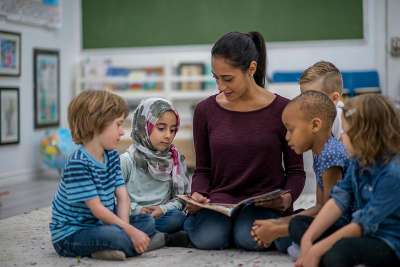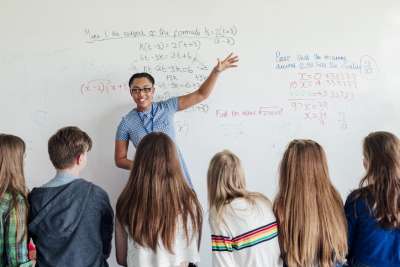Repeated Reading Individually
While direct assistance from peers is worthwhile and productive, it does have its limitations. Some students need more interactions with a trained professional to make progress in reading. There are several ways teachers can structure practice for students who need more intensive help in becoming more fluent readers. One way is through the use of a tape recorder.
- The student can practice reading into a tape recorder.
- When he or she is finished practicing and self-monitoring using a tape recorder, then the student can read to the teacher.
Of course, individual practice with repeated readings can be facilitated by engaging the help of classroom volunteers and parents. Teachers can plan for regular monitoring of individual students' repeated readings by having "students of the day." For example, the teacher might have three "Monday" children who read to him or her during a center time. Other children are assigned on other days of the week. This rotation provides a systematic way to plan for monitoring of student repeated readings.
What research backs it up?
Numerous research studies have documented the impact of repeated reading in improving reading fluency and word recognition accuracy and in playing a significant role in improving reading comprehension (e.g., O'Shea, Sindelar, & O'Shea, 1987; Rashotte & Torgesen, 1985).
What does it look like in practice?
Ms. Yaden has planned a variety of repeated reading activities for her second grade class. Each week she selects one trade book or poem related to her current thematic unit for a whole-class repeated reading. She selects books or poetry with predictable rhymes or story patterns. Class-wide Peer Tutoring is part of the regular schedule on Mondays, Wednesdays, and Fridays. The activity takes only 20 minutes or so, but Ms. Yaden has seen that her students have made progress in becoming more fluent readers in a short period of time. From time to time she takes a break from more structured Class-wide Peer Tutoring and lets children select their own reading material and their own partners during the paired reading period.
Four of Ms. Yaden's students need even more practice with repeated readings and even more careful monitoring. She has trained her paraprofessional in how to conduct repeated readings on a one-to-one basis. Ms. Yaden has planned for daily practice sessions for each child with the paraprofessional. Ms. Yaden has also scheduled a rotation so that she can listen to each of the children at least once a week and record their progress in their reading portfolios.
Additional Information
Fuchs, D., Mathes, P. G., & Fuchs, L. S. (1993). Peabody Classwide PeerTutoring reading methods (Unpublished teacher's manual). (Available from Douglas Fuchs, P.O. Box 328, George Peabody College, Vanderbilt University, Nashville, TN 37203).
Mathes, P. G., Fuchs, D., & Fuchs, L. S. (1995). Accommodating diversity through Peabody Classwide Peer Tutoring. Intervention in School and Clinic, 31, 4~50. O'Shea, L. J., & O'Shea, D. J. (1988). Repeated reading. TEACHING Exceptional Children, 20(2), 26-29.
*Excerpted from: Adapting Reading and Math Materials for the Inclusive Classroom by Jeanne Shay Schumm (1999).















